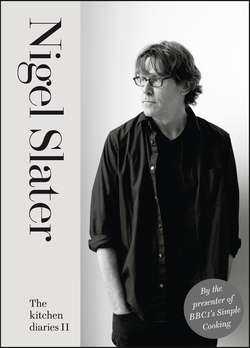Читать книгу The Kitchen Diaries II - Nigel Slater - Страница 36
JANUARY 20 A golden fruit
ОглавлениеA need for something sweet so I walk along London’s Edgware Road, with its Lebanese grocer’s and pastry shops. On a winter’s afternoon, this road north of Marble Arch is where I go to stock up on what we used to call sweetmeats – the tiny, sugary fruits and pastries that mark the end of a meal. Though I should add that they come out with coffee too, mid morning.
Today there are boxes of darkly sticky dates, powdery lokum, the Turkish delight whose chewy translucency comes scented with rose, pistachio and lemon, and crates of fat, gritty figs. Any of these will signify the full stop at the end of dinner as effectively as a slice of pie (though I would rather have the latter, if I’m honest). There are crimson pomegranates too, lemons on the twig, and tangerines sold with their leaves. There are pale and milky walnuts in their shells, sugared almonds and sultanas the colour of Sauternes.
Today I come back with a small box of honey-soaked pistachio pastries, a bag of fudge-textured dates, some thick, snow-white Lebanese yoghurt and a polystyrene tray of lamb chops the size of a baby’s fist. They will be grilled and dipped into hummus. Almost absentmindedly, I also pick up a handful of golden, pear-shaped quinces.
Despite its delicate fragrance, the quince is a harsh taskmaster. You need a strong wrist and a good knife to get through its hard flesh, and patience to see it cook through to tenderness. Your efforts will be rewarded though. Cooked slowly, this rock-hard fruit will be transformed into one of glowing colour and gently honeyed flavour. If you leave one to simmer with sugar and water, it will eventually turn a deep, translucent crimson.
Just two quinces in an apple pie are enough to imbue the entire filling with their scent and flavour. The quince’s flesh is considerably drier and more grainy than the apple, and needs additional moisture and time in which to cook. I put them on first, adding the apples only once the quince is showing signs of softness. In Tender, I used them in a pickle, a crumble and to sweeten a dish of slow-cooked lamb, but I spent today working them into a pie. Instead of a pastry crust, I have enclosed them in a loose form of crumble, so that the amber fruit shows through.
This tart needs a good hour or more of our time, but is really rather good. Serve it with a jug of cream or a scoop of crème fraîche.
